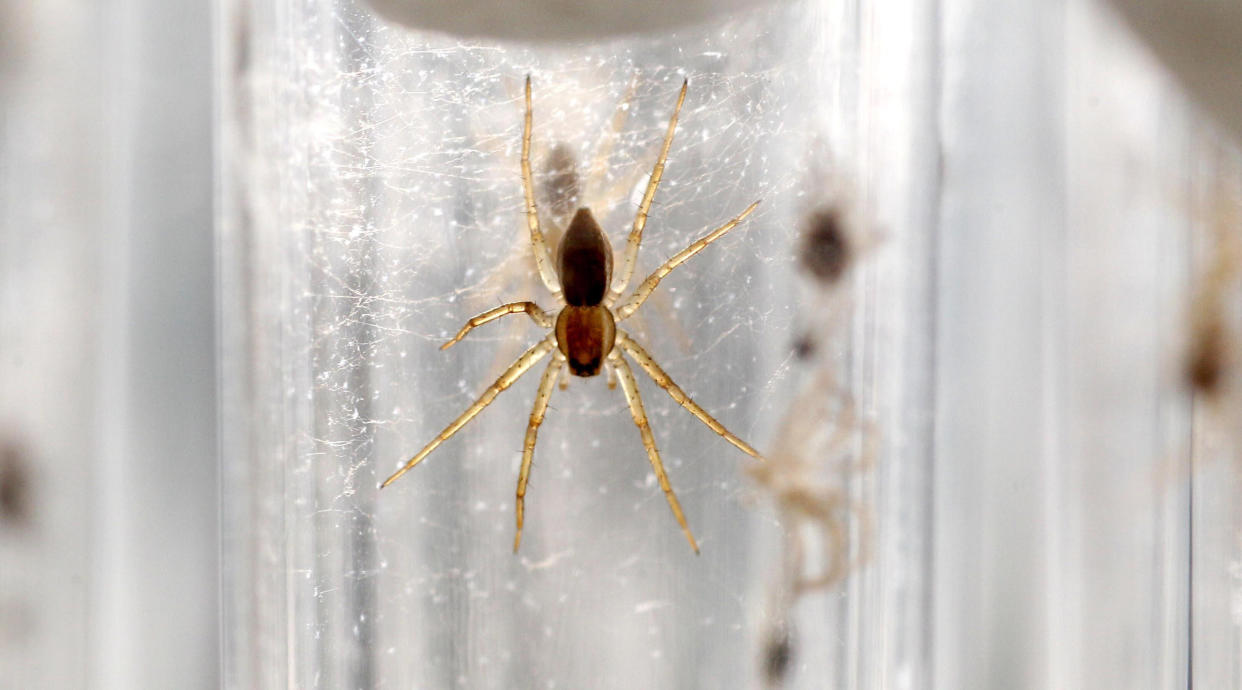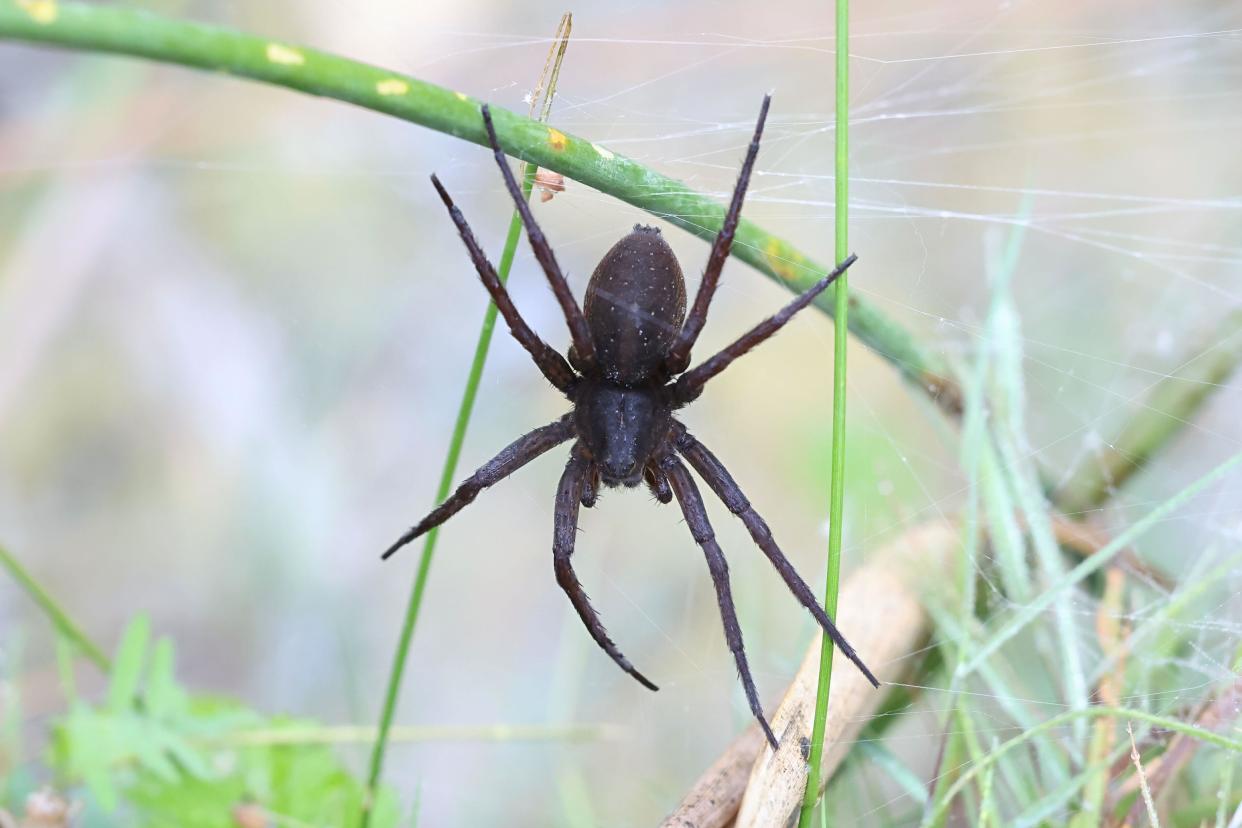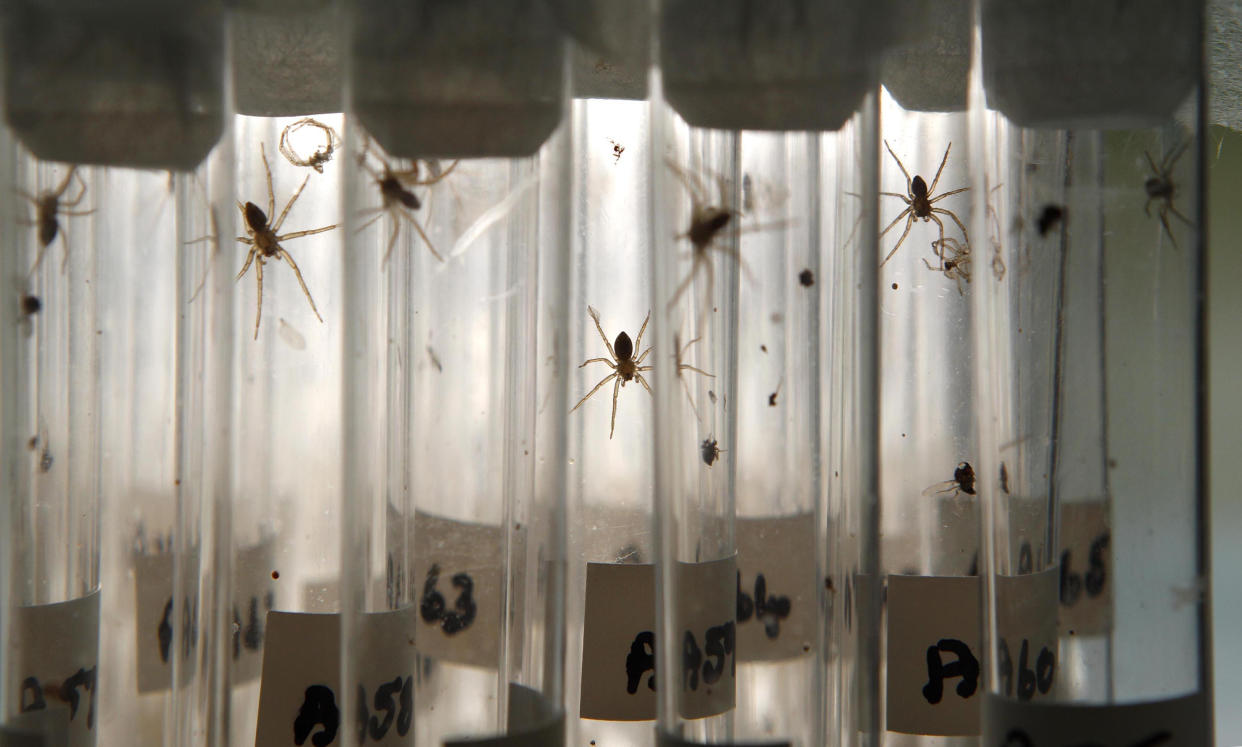Rat-sized spiders are not actually going to invade UK homes

One of the UK's larger spider species is making a comeback, but experts have debunked claims over its size, along with fears it is 'invading' homes.
Conservation efforts have meant that the fen raft spider – which was previously on the brink of extinction – is now seeing an increase in numbers.
But its resurgence has seen a flurry of headlines suggesting that 'rat-sized' spiders with webs 'the size of pizzas' are invading homes and gardens across the UK.
In reality, things aren't quite as dramatic, according to experts from the British Arachnological Society, who have said its resurgence is a positive sign of what conservation efforts can achieve.
"Spiders do not ‘invade’ homes and gardens at this time of year," a spokesperson told Yahoo News UK, adding: "Despite recent headlines, fen raft spiders do not look like rat-sized spiders with webs the size of pizzas. They are no bigger than large house spiders – still one of Britain’s largest spider species but still very small animals."
Here is everything you need to know about the fen raft spider from experts:
How people can recognise fen raft spiders
Unlike rumours of being rat-sized creatures, fen raft spiders actually have velvety black or brown cigar-shaped bodies, and occasionally reach up to 23 mm long, the spokesperson said, describing them as "stunningly patterned" with white or cream ‘go-faster’ stripes running along their sides.
"In the seven small areas where they are found, they may be spotted ‘rafting’ or rowing on the water surface (they can even sail by putting a leg into the air), or among plants at the water’s edge. They hunt, mainly aquatic insects, by stealth, and their only webs are dense silk nurseries built by the mums to protect their newly-emerged youngsters in summer."
While the anchoring threads for these nurseries can spread quite a distance, the main part of the structure is more like the size of a scone than a ‘pizza’, the expert added.

Why they are making a comeback?
The loss of over 90% of Britain’s lowland wetlands to drainage and development meant the species had been restricted to just three sites, and it was considered at risk of extinction in Britain and globally.
To fight this risk, in 2010 a conservation effort saw the spider returned to four restored wetlands in the Norfolk and Suffolk Broads by Natural England. Since then, the spider has established itself in these areas and their numbers are growing.
Where they are most likely to be found in the UK?
The three remaining natural populations of the fen raft spider are on the Pevensey Levels in East Sussex, in South Wales near Swansea and on the Norfolk-Suffolk border at Redgrave and Lopham Fen National Nature reserve.
The new populations are all in grazing marshes in the Broads – two by the River Waveney near Lowestoft, one by the River Yare east of Norwich and one by the River Thurne. These are protected sites and the spiders themselves are fully protected by law.
What should you do if you come across one?
"Although these spiders look striking in close-up photos, they’re beautifully camouflaged in their natural habitat and very difficult to spot", the spokesperson told Yahoo News UK.
"Encounters with them are highly unlikely unless you’re in one of these seven protected areas and looking hard around the margins of the water, but we’re always interested in possible records."
Anyone who does spot one should take a photo and submit it along with the date, location and their name at https://irecord.org.uk/enter-srs-records.
Why is the return of fen raft spiders positive?
The fen raft spider is one of many species facing extinction in Britain, but work to reduce the risk in recent decades shows that we "really can make a difference" and species can be brought "back from the brink", the British Arachnological Society said.
"For the very many people in Britain who love our rich and varied wildlife, bequeathing the opportunity to marvel at species like these to their children and grandchildren really matters – hopefully, one less extinction on our watch."
While the ecological impact of the fen raft spider's return could be small, it does contribute to making wetland ecosystems more resilient, the expert said, providing food for other wetland species and also depending on other species for food.

What about reports that they are 'invading homes'?
Despite widespread media reports, spiders don't "invade" homes and gardens, the spokesperson said.
They said recent coverage is not only frustrating but "sad", "because there are so many fascinating and true stories that could be published about spiders that would help change misperceptions of them and combat arachnophobia - which is really debilitating for many people".
When is 'peak' spider season?
There are over 680 species of spider in Britain, according to the British Arachnological Society, and different species mature at different time of year.
"For example, garden spiders that sit in their fabulous orbwebs and many tiny money spider species that are only noticed when autumn dews cover their hammock-like webs, mature in late summer," the spokesperson said.
"The large house spider species, the usual target of these reports, mature throughout the year but in greatest numbers around now – they, and many other species live, often unnoticed, in houses throughout the year. The recent ‘Britons warned to seal their doors and windows’ is therefore particularly bizarre."
Spider sightings tend to peak in the autumn when the males of many species reach adulthood and wander about looking for females, according to spider identification expert Stuart Hinebut, and warmer weather means we keep our doors and windows open longer into spider season, which lets more of the wandering males in.
"They aren't bigger, and there aren't really more of them," said Hine. "What we can say is that because of the weather and our windows and doors remaining open, there are more observations of some of the larger species that enter our homes."
A warm and dry autumn means a longer season for many of the male spiders, who will roam around for longer rather than finding a dry garage or attic to hide in when it's wet, he said, adding: "The kindest thing anyone can do is let them outside. They are only looking for one thing, and that's the lady spider."
Read more


